Our verdict
Welcome to my In-depth review of the Garmin HRM-tri, also known as the Garmin Heart Rate Monitor for Triathlon, which lets you track your heart rate during swimming sessions, which is helpful for a triathlete.
I’ve personally used the HRM-tri belt during a whole year of Ironman training – and I’m very pleased. The belt fits great, the battery life is excellent, and it connects instantly to my Fenix 5 watch, and Garmin edge explore.
In addition, the HRM-tri unlocks the running dynamic function in your Garmin watch. Furthermore, the cadence measurement is also more accurate because the clock is located on one side of the body (left or right wrist), whereas the module in the heart rate belt is placed in the middle of the body.
Best deals today
HRM-tri for swimming
Unlike its counterpart, the HRM-Swim, Garmins HRM-Tri isn’t made for swimming in pools. During the review process, this was clear.
The HRM-tri is not made of a perfect non-slipping material for swimming. However, that is because Garmin made it for triathletes wearing wetsuits. The material and transmitter for the HRM-tri are much smaller, making the HRM-tri more comfortable to wear while wearing a wetsuit.
In addition, HRM-Tri is not optimized for use in pools with chlorine, which is why we recommend you use HRM-Swim for your daily training in pools where chlorine is being used. However, you can easily use the HRM-Tri in swimming pools – I personally did this. The main downside of the HRM-tri is that it slides down if you’re during quick turns in the swimming pool. The slips can be pretty annoying, but it does just fine otherwise – and the heart rate tracking is excellent.
How to replace the battery in Garmins HRM-tri belt
- Replace the colored ring around the Garmin logo. It can be pretty tight, but I’ve had great luck with a non-sharpened butter knife.
- Unscrew the four screws holding down the cover to the module.
- Remove the cover and take out the battery. DO NOT use the butter knife; simply flip the belt around.
- Wait 30 seconds and replace the battery with the positive side is facing out.
- It goes without saying, but screw everything in place and pull on the cover again.
To protect your battery against water damage, you should replace the O-RING once in a while. They can be bought for 2 dollars on amazon. Definitely worth the investment!
Personally, I’ve bought the O Ring Assortment Kits!
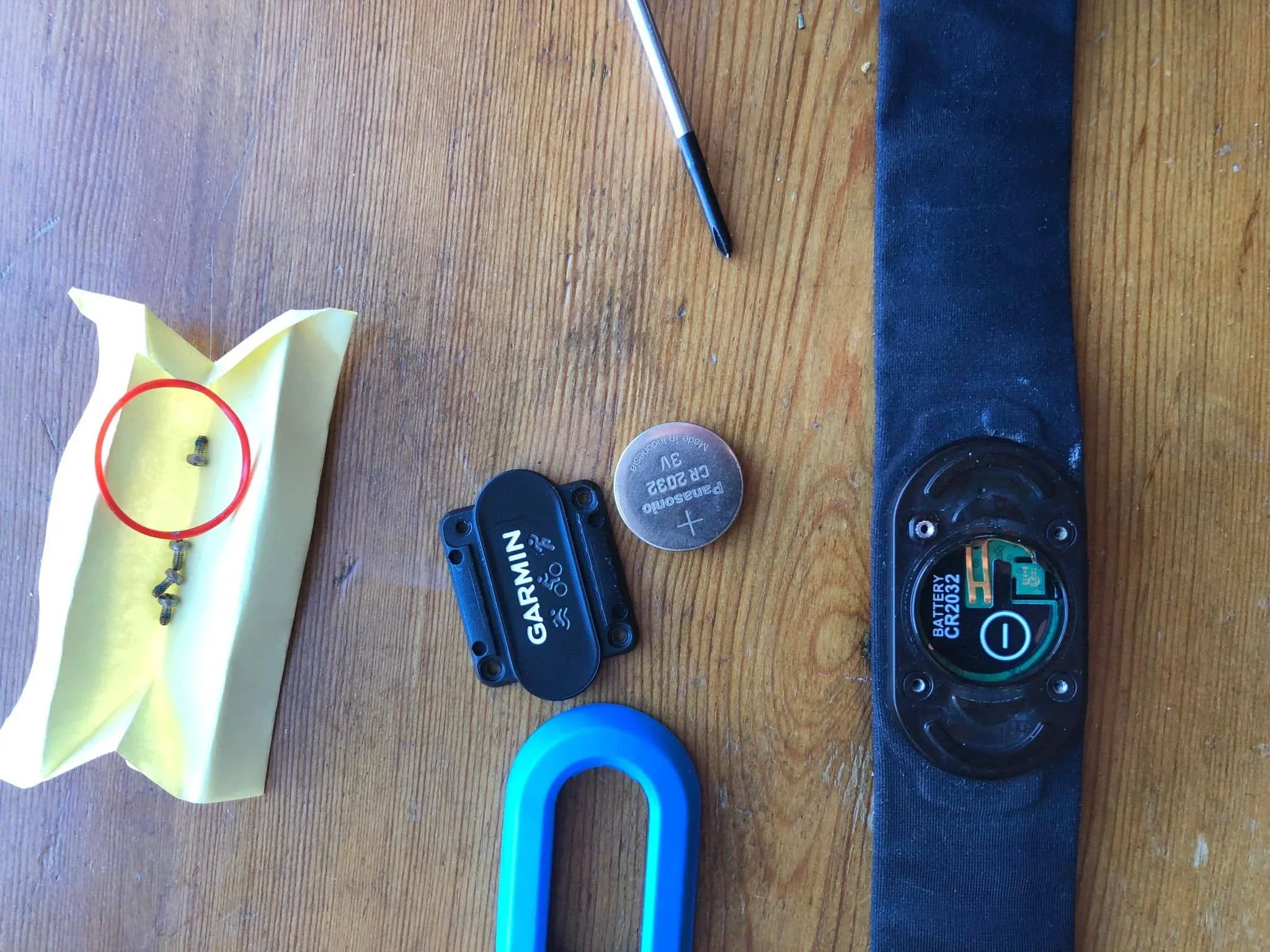
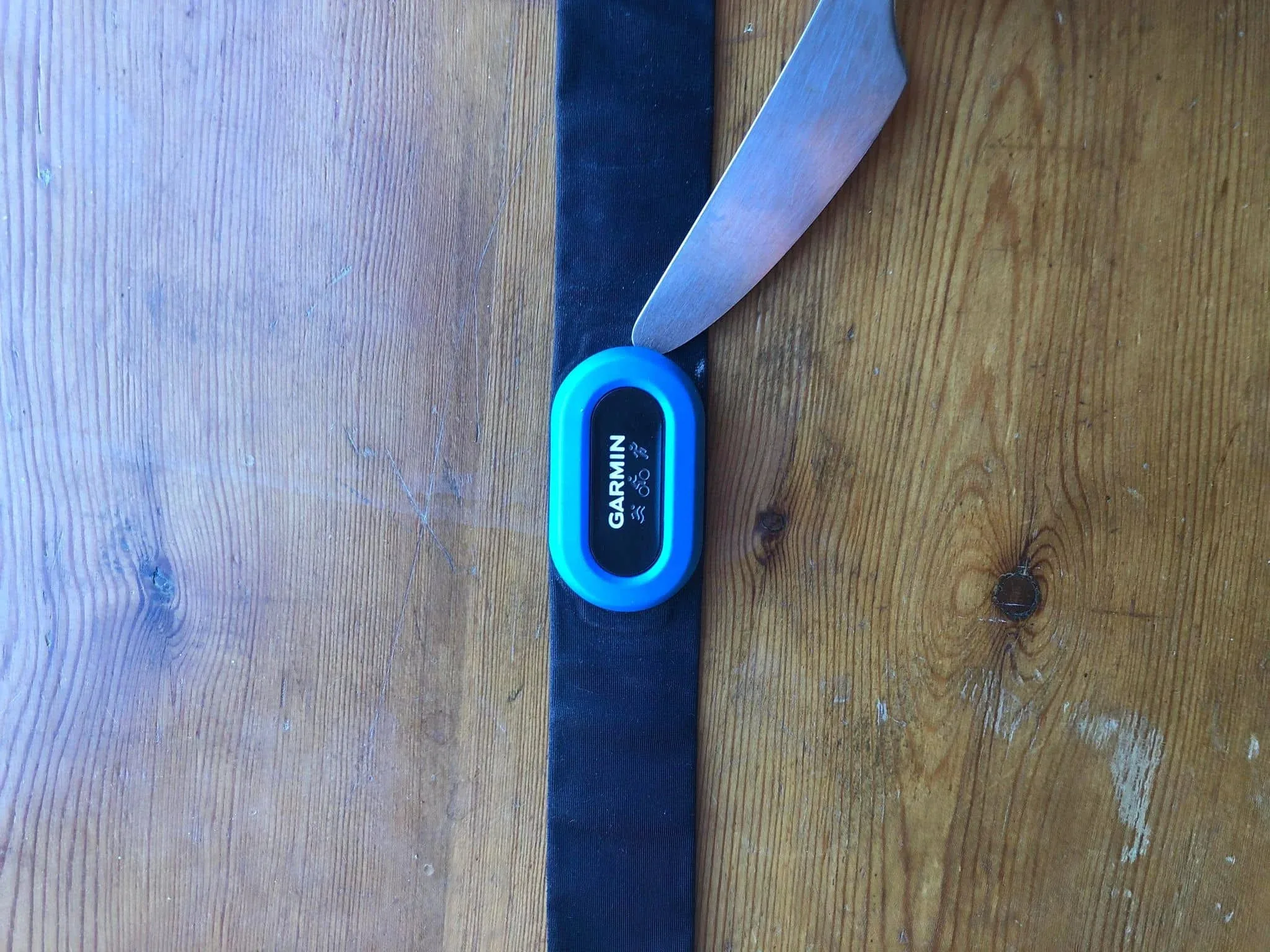
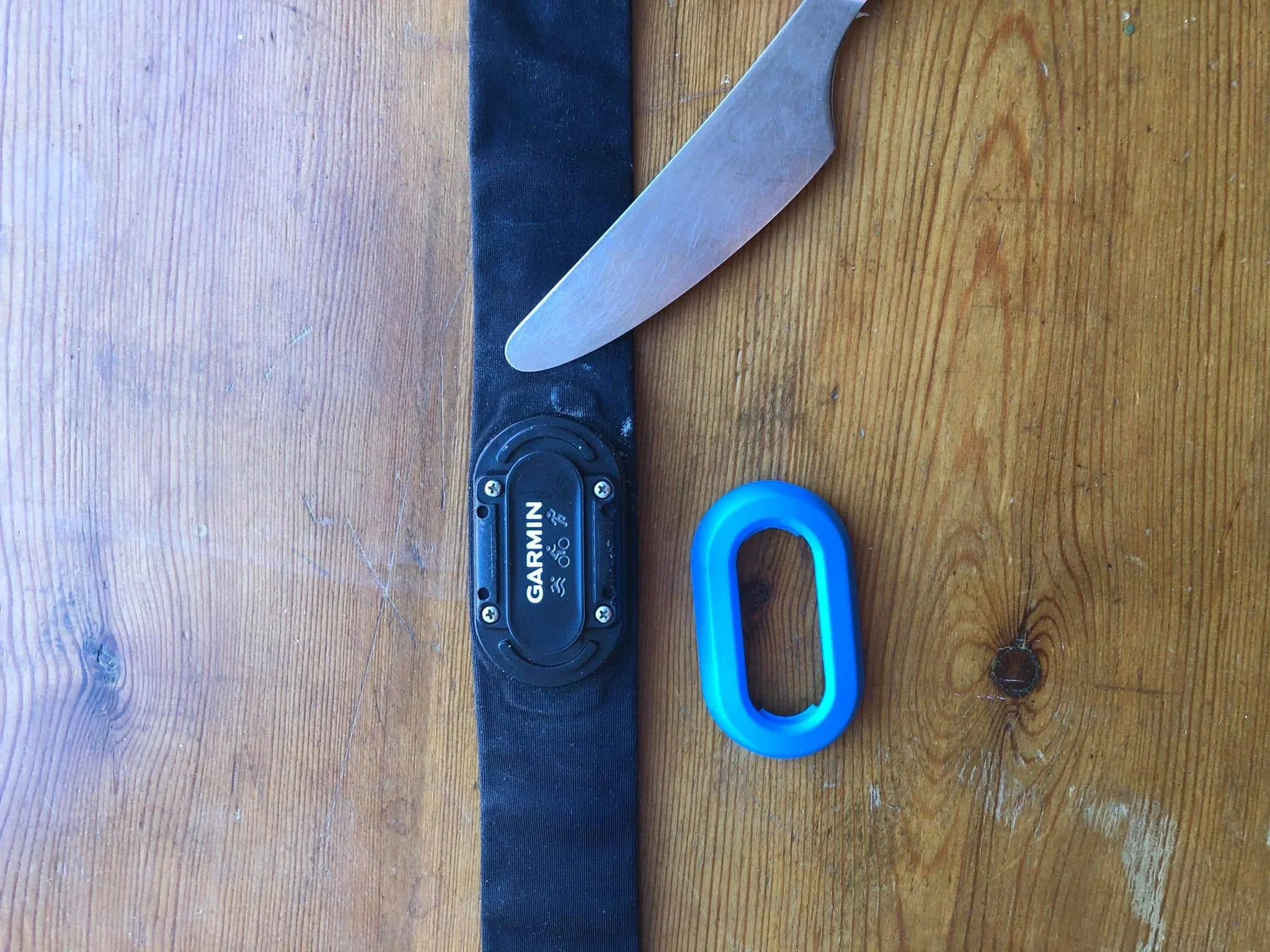
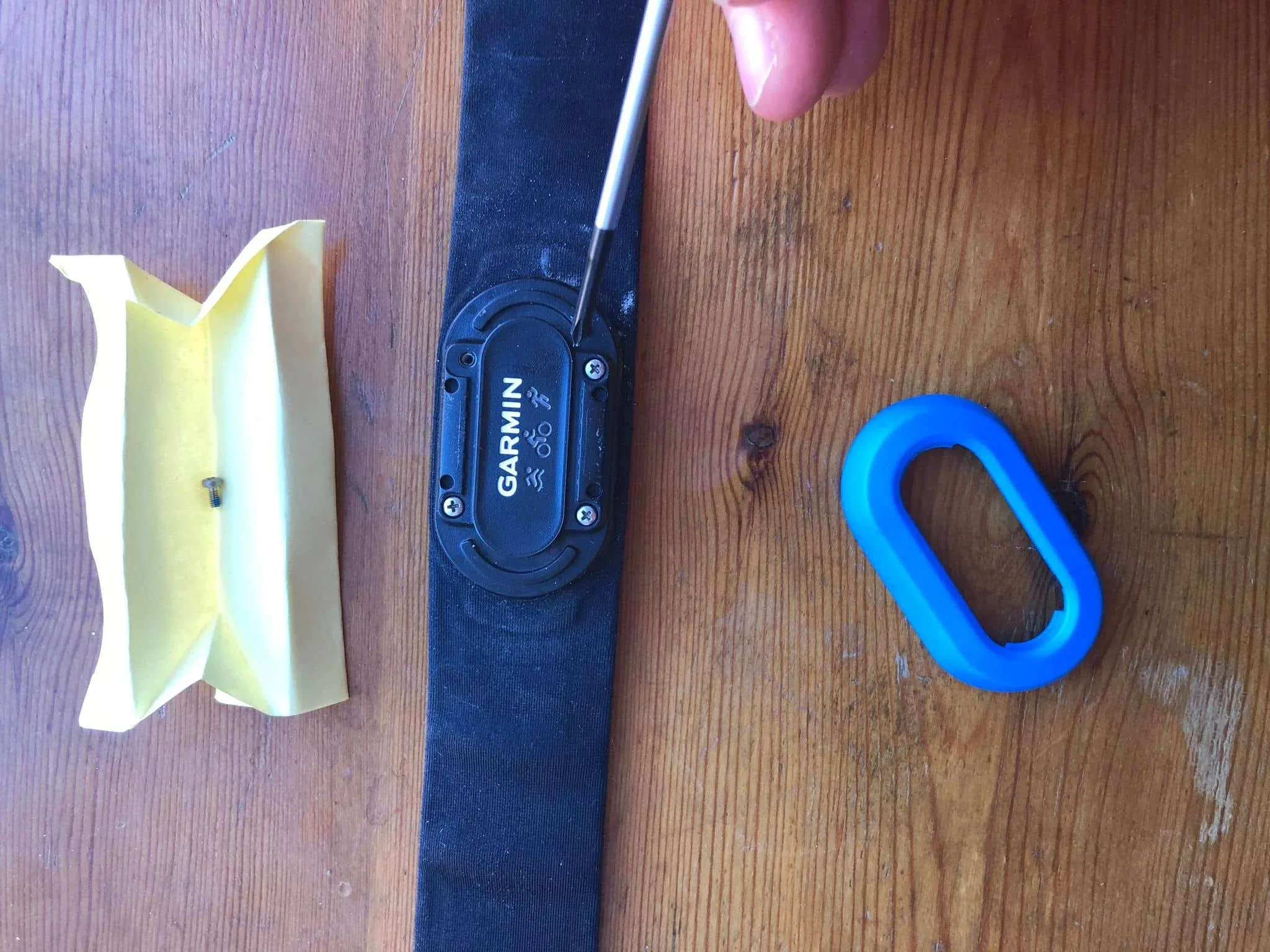
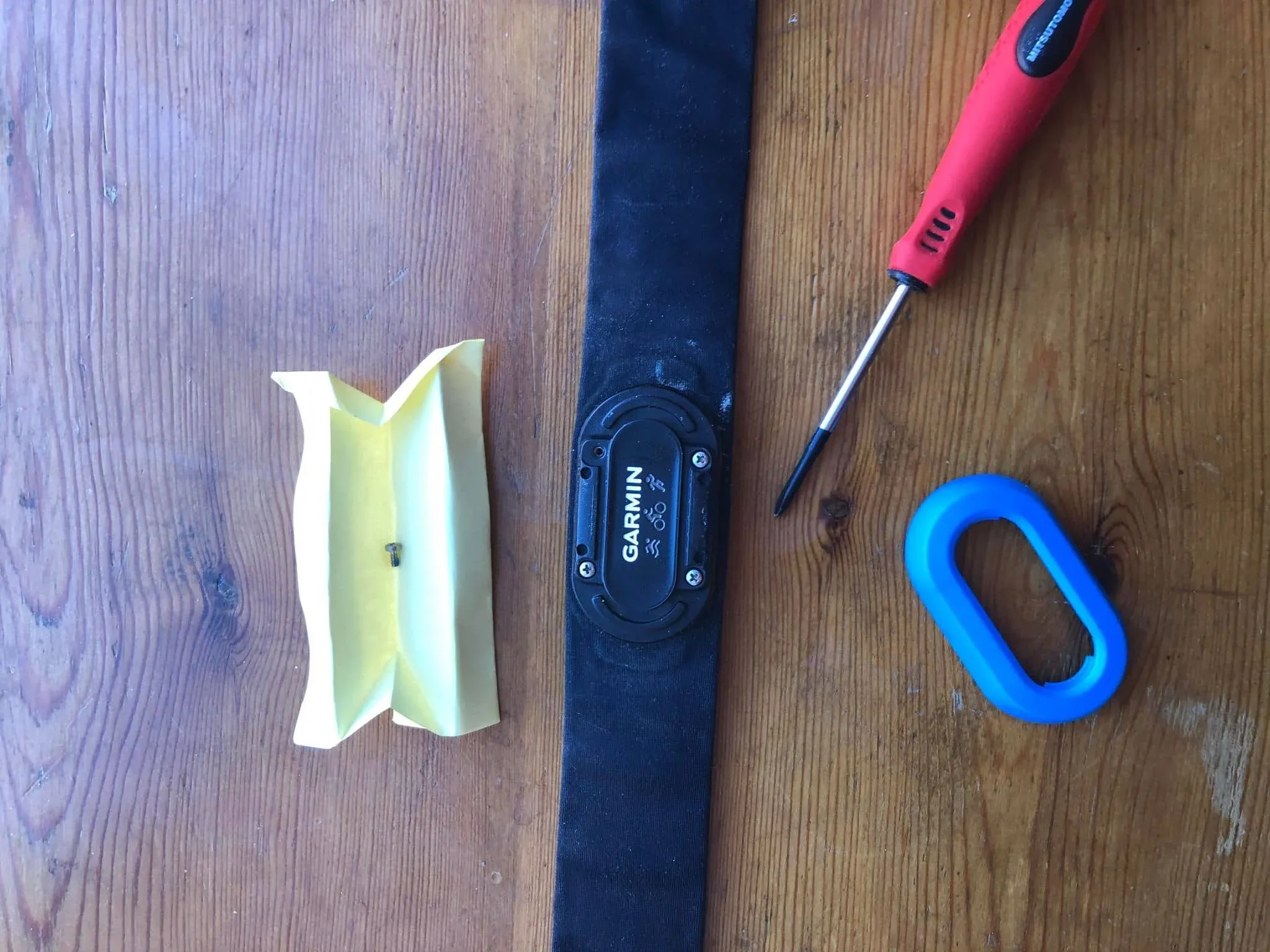
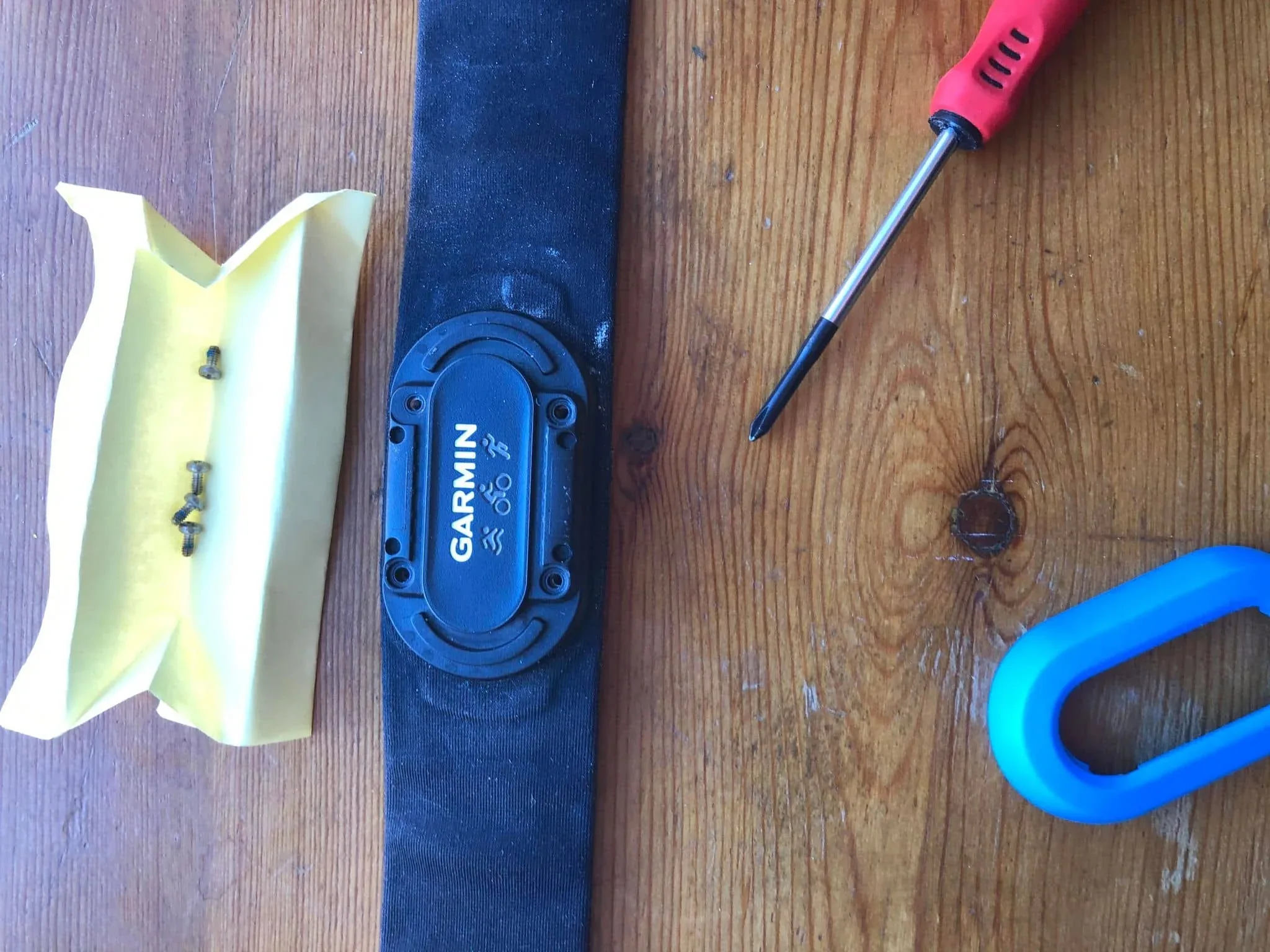
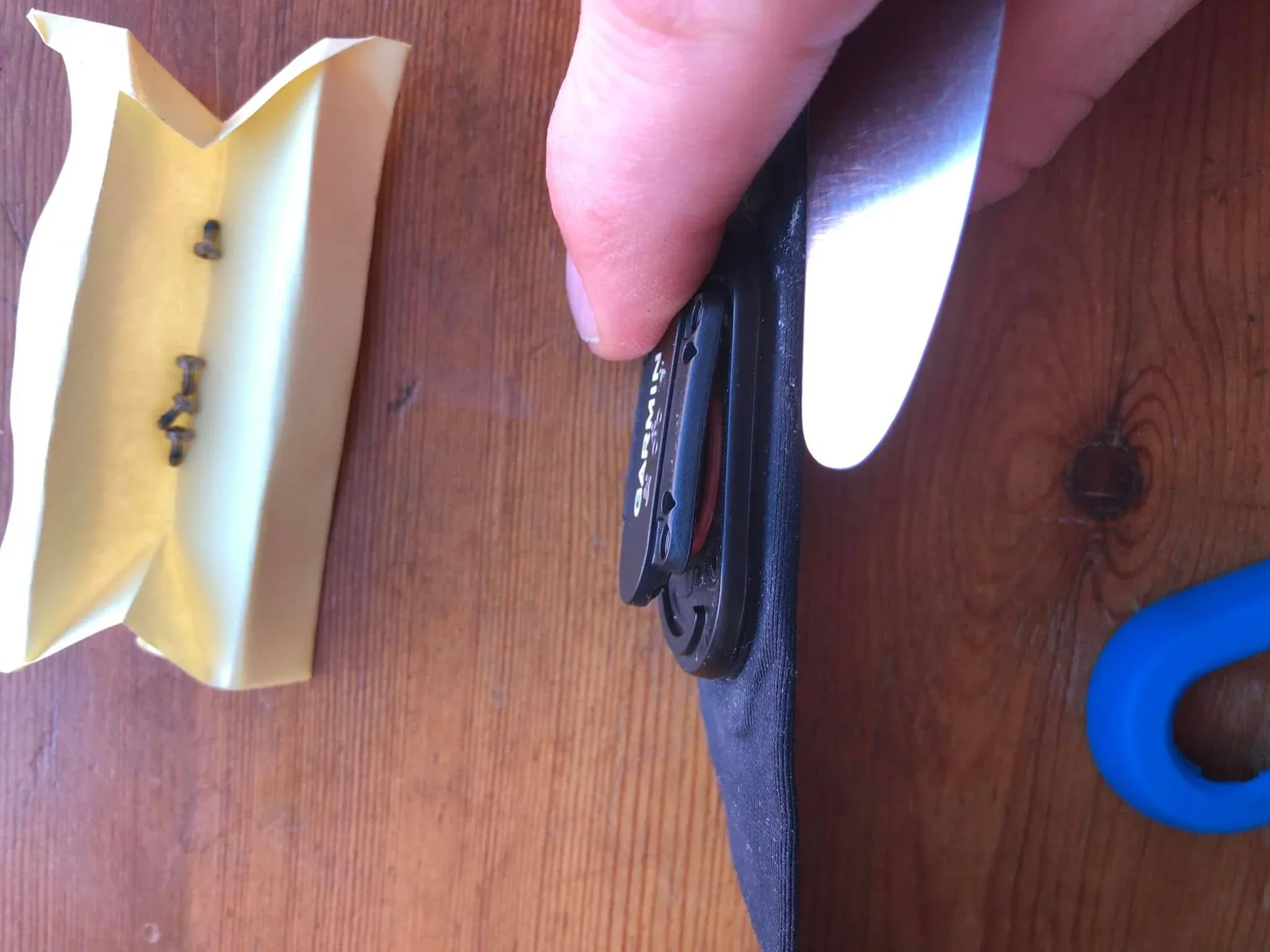
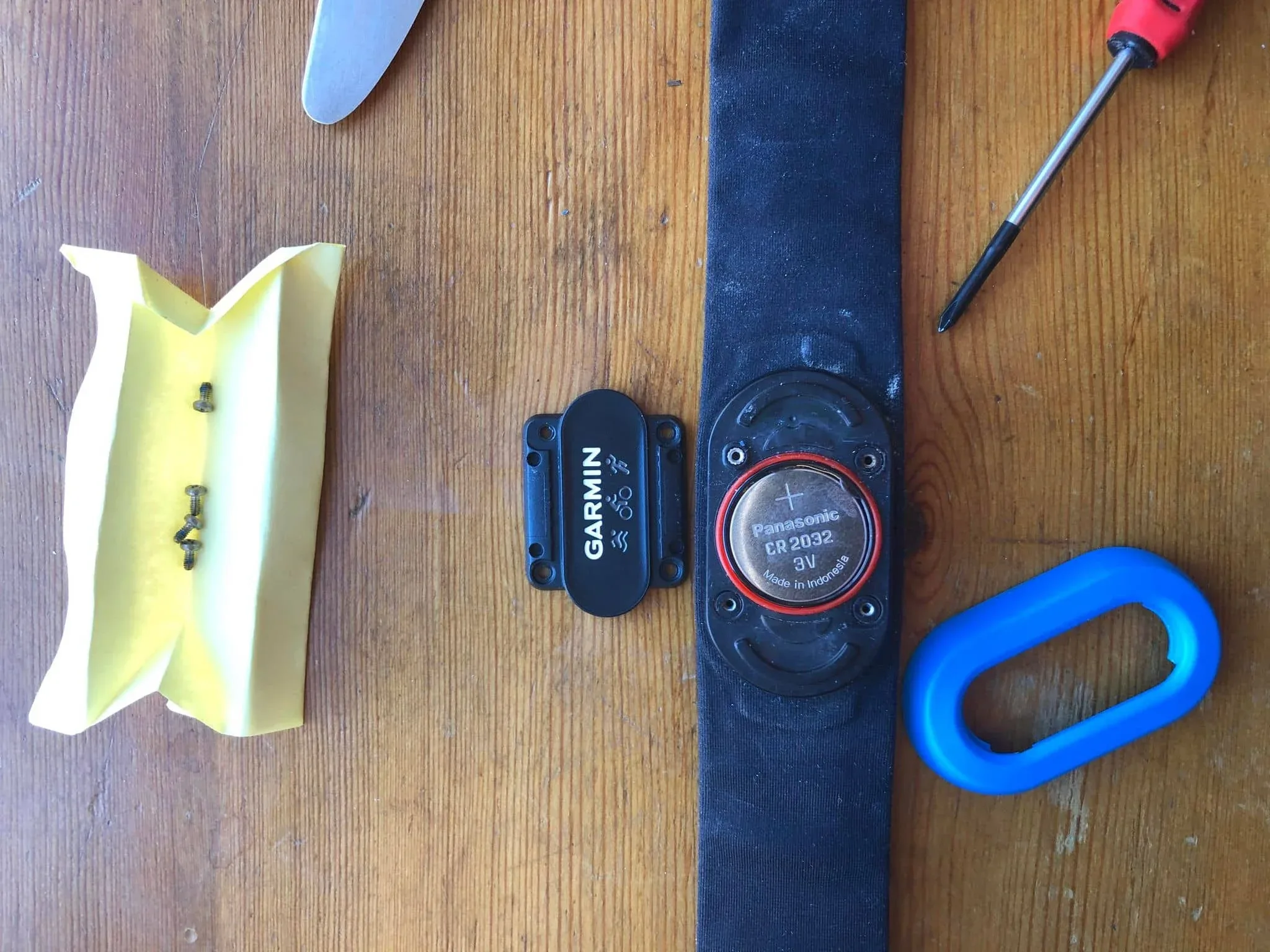

HRM-tri and running dynamics
If you have any newer Garmin watches, like the Fenix 5 or the Forerunner 245, the Garmin HRM-tri belt will unlock the Garmin Running Dynamics features on your watch.
What are Garmin’s running dynamics?
Running Dynamics are your different running dynamics that consist of six different data points. You can use them to measure your running performance, so you get more insight into your training and see where you can improve yourself to become a better runner. To measure all six running dynamics, grab a heart rate monitor from Garmin. We have HRM-Pro and HRM-Run – which you can find here – and they are compatible with most sports trips from Garmin.
The first and second running dynamic using Garmins HRM-tri belt
The first running dynamic is the cadence, which you can measure pretty much all Garmin’s sports watches. Cadence is the number of steps per minute which Garmins describes as SPM (Steps per minute). In addition, on the SPM, the HRM-Tri belt also allows your Garmin watch to calculate the length of your steps, measured in meters.
The third and fourth running dynamic using Garmins HRM-tri belt
Using the HRM-Tri belt, your Garmin watch allows you to measure Vertical fluctuations, the degree of “up / down movement” in your run. It shows the vertical movement of your upper body measured in centimeters for each step. In addition to that, it also unlocks the Vertical ascent ratio, which is the ratio of vertical fluctuations to stride length (displayed as a percentage). A lower number typically indicates a better running form.
The Fith and sixth running dynamic with Garmins HRM-tri belt
GCT, or Ground Contact Time, is also unlocked. The GCT analytics measures how much time each of your steps spends on the surface during your run. The final running dynamic is the CCT balance, which is how much time your right and left foot spend on the ground: Garmin displays this as a percentage. E.g., 55% time on the left foot and 45% on the right foot.
Compatible Garmin watches with running dynamics.
Running Dynamics is only compatible with Garmin Forerunner 735XT, Forerunner 920XT, Forerunner 935, Forerunner 945, and Forerunner 620, Fenix 3, Fenix 5 series, Fenix 5 Plus series, and Garmin Epix.




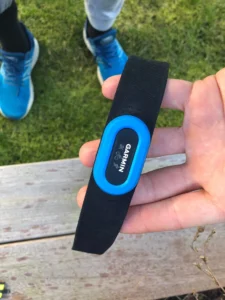


7 Responses
Great review! Could you give us a link for a O-RING that works with Garmins HRM-tri belt?
Cheers.